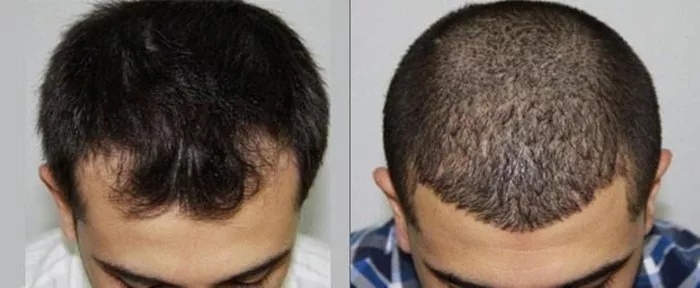After undergoing a hair transplant procedure, it’s essential to understand when it’s safe to resume exercise to ensure optimal healing and results. Here’s a comprehensive guide on the timeline and considerations for physical activity post-transplant:
Immediate Post-Transplant Period
During the immediate post-transplant period, it’s critical to avoid strenuous physical activities that could strain the scalp or disrupt the healing process. This includes activities like heavy lifting, vigorous exercise, and any movements that might impact the transplanted area.
First Week After Surgery
During the first week after surgery, it’s important to prioritize rest and gentle care for the scalp. Activities that increase blood pressure or heart rate significantly should be avoided to prevent potential complications and ensure the grafts settle properly.
See also: How Much Money is Needed for a Hair Transplant?
Weeks 2-3: Gradual Resumption of Activity
Around weeks 2-3 post-transplant, you can begin to introduce light physical activities such as walking or gentle stretching. These activities promote circulation and overall well-being without exerting undue stress on the scalp or newly transplanted follicles.
Week 4 and Beyond: Returning to Normal Exercise Routine
By week 4 and beyond, most patients can typically resume their regular exercise routines gradually. However, it’s essential to listen to your body and avoid activities that could impact the transplanted area excessively. Start with low-impact exercises and gradually increase intensity as you feel comfortable.
Considerations for Different Types of Hair Transplants
Follicular Unit Transplant (FUT):
If you underwent an FUT procedure, where a linear incision is made on the scalp, take extra care to avoid activities that could strain the scar during the initial healing phase.
Follicular Unit Extraction (FUE):
With FUE, where individual follicles are extracted and implanted, recovery is typically quicker. Still, it’s essential to protect the newly transplanted grafts during the healing process.
Consultation with Your Surgeon
Always follow the specific instructions provided by your hair transplant surgeon. They will offer personalized advice based on your procedure, overall health, and recovery progress. If you have any concerns or questions about resuming exercise, consult your surgeon before making any changes to your routine.
Conclusion
In conclusion, the timeline for resuming exercise after a hair transplant varies depending on the procedure type and individual healing factors. Adhering to the guidelines provided by your surgeon is crucial to ensure optimal healing and minimize risks to the transplanted hair follicles. By gradually reintroducing physical activity and monitoring your body’s response, you can support a successful recovery and enjoy the long-term benefits of your hair transplant procedure.
FAQs
How soon can you workout after a hair transplant?
After undergoing a hair transplant procedure, it’s crucial to allow adequate time for your scalp to heal. Strenuous physical activities like heavy lifting, running, or vigorous exercises can increase blood pressure and potentially dislodge the newly transplanted hair follicles, affecting the overall outcome of the procedure. Therefore, it’s generally recommended to wait at least 1-2 weeks before resuming such activities.
During this initial healing phase, the scalp is still sensitive, and the grafts are settling into place. Your surgeon will provide specific instructions based on the type of transplant and your individual healing progress. It’s essential to follow these guidelines closely to ensure the best results from your hair transplant.
Is it okay to sweat after a hair transplant?
Sweating excessively can be detrimental to the healing process after a hair transplant. The sweat itself can irritate the scalp, potentially leading to discomfort and compromising the healing grafts. To minimize these risks, it’s advisable to avoid activities that induce heavy sweating, such as intense workouts or exposure to high temperatures, during the first week or two after surgery.
Instead, opt for gentler forms of exercise that don’t lead to excessive sweating. Light walking, yoga, or stretching exercises can promote circulation without putting undue stress on the scalp. Always listen to your body and avoid activities that cause discomfort or excessive perspiration.
Can I start working after a hair transplant?
Returning to work after a hair transplant largely depends on the nature of your job and your individual healing progress. If your work primarily involves desk-based tasks or does not require strenuous physical exertion, you may be able to resume work within a few days post-surgery.
However, if your job involves physical labor, exposure to dust, or other factors that could potentially affect the healing scalp, it may be advisable to wait longer before returning to full duties. Your surgeon will provide specific recommendations based on your unique circumstances to ensure that your scalp heals properly and that the transplanted hair follicles have the best chance of success.
How much can I walk after a hair transplant?
Walking is generally considered a safe and beneficial activity after a hair transplant. It helps promote blood circulation, which is essential for healing and the growth of transplanted hair follicles. In the immediate days following surgery, short walks around the house or gentle strolls outdoors are recommended to prevent prolonged sitting or lying down, which can lead to discomfort and stiffness.
As your scalp continues to heal over the following weeks, you can gradually increase the duration and intensity of your walks. Pay attention to any signs of discomfort, swelling, or irritation during and after walking, and adjust your activity levels accordingly. Always consult with your surgeon about when it’s appropriate to increase physical activities like walking and ensure you’re following their specific post-operative care instructions.
By following these guidelines and staying in close communication with your healthcare provider, you can support a successful recovery after your hair transplant while gradually returning to your normal activities.
You May Be Interested In

